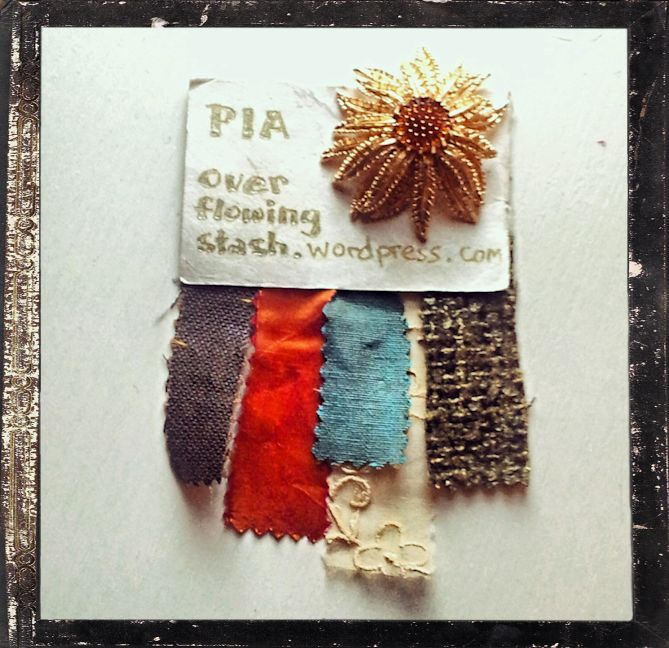Catching up on emails some of you left via my contact form, I noticed quite a few inquiries about when Stuart Anderson – the author of the now defunct (Stretch) Pattern School website – will be publishing his book on drafting swimwear patterns. Unfortunately I have not received any update from him. It’s a shame that the knowledge may be lost, but I have to respect the man’s right to a peaceful retirement. If he feels it’s too much work & investment to assemble & publish a book sharing his knowledge, then it is too much work & investment.
Let’s just pray that if it’s not him, then some other stretch pattern expert with proven industry experience will step up to the plate. And let’s appreciate and not take for granted all the wonderful online resources that are still available, many of which are free! Who knows which website will go offline for one reason or another. Access to these info is not a right, it’s a gift from authors & teachers who generously share their knowledge with us. Let’s support them when & where we can. At the very least thank them for sharing!
And I’m certainly grateful to Stuart for sharing his knowledge that enabled me to develop my current set of pattern blocks for stretch fabrics.
2020-07-20 update: GREAT NEWS! Mr Anderson is back from retirement with his (Stretch) Pattern School 2.0! I haven’t explored it in details yet, but he says the info has been updated to reflect latest developments in swim / dancewear technology. Unfortunately the free auto-generated custom block feature is gone because the company that host the new website doesn’t offer such sophisticated programming options. But there is now a Pattern & Block Shop for RTW designers & interested home-sewers. Presumably this will be standardised sizing rather than custom based on your measurements, but certainly better than nothing! There’s also a Pattern School Online Facebook group & he’s also on Instagram (pattern.school.online) if you want to get latest updates from him. Have fun!
2017-05-19 update: I tried contacting Mr Anderson again for an update on his book publishing plan & got a lawsuit threat in response. He is highly protective of his copyrights & privacy. Any form of sharing is strictly forbidden regardless of whether he publish a book or not. So to avoid lawsuits absolutely no sharing of his content if, like me, you saved some pages for your own personal reference. Hopefully my review of my experiment using his instruction doesn’t constitute a copyright infringement. He made clear to me that I’m not to contact him again, so I will not follow-up with any update on book or no book.
If you’re looking to draft your own stretch block, then you will have to look elsewhere for instruction. Mr Anderson’s method is no longer an option.
Since part of the fun of writing sewing blog is the sharing of experience, I’m going to look into replacing my Pattern School blocks with one drafted from instructions that are still publicly available. Then hopefully when I design from my stretch blocks then you too can learn to create & design with your own stretch blocks. I’m thinking maybe Pattern Cutting for Lingerie, Beachwear and Leisurewear by Ann Haggar…or go back to Designing and Patternmaking For Stretch Fabrics since I’m not really looking for swimwear blocks. I may also experiment with adapting my 0-ease woven blocks – either my Kenneth King moulage or my body wraps.
If you’re looking to enter the swimwear design field & can expense professional books & subscriptions, maybe try Intimate Apparel Journal (ia-technical.com) website. They have articles on “Introduction to Swimwear Pattern Cutting Principles” & “Grading Swimwear” available at $19.90 each. Or you can buy a subscription which costs $299/yr for verified students or $399/yr for professionals (4 issues/yr). Their shop also offers past issues of the IA Journal, special-topic compilations, or individual articles for purchase. The site is run by a Hong Kong professor with experience in the intimate apparel industry. But the above articles are written by David Morris, a British technical designer who worked for well-known intimate apparels brands & also taught at university level in the UK. David also runs Intimate Apparel Technical website (iatechnical.com) which offers a remote learning course on Swimwear Pattern Cutting & Grading for £250.)
Both are above my pay grade since I’m only sewing for myself, so I can’t comment on whether either professional sources are worthwhile. But I may just pay for an article or two from the Hong Kong site to learn the basic principles again from a publicly available source.









































































